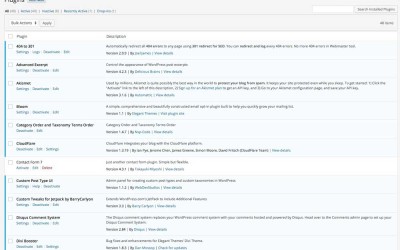Inbound marketing relies on great content that is posted on a regular basis to your website. And the best way to do this is through constant and consistent blogging.
Blogging can help to establish you as a leader in your industry and gives your website visitors, who will hopefully become customers or clients, a way to interact with your brand. It’s also an integral component in your SEO efforts.
That being said, people often stop blogging because they feel that all of their efforts don’t bring them much return. The thing is, with this type of marketing, you need to be in it for the long haul. Slow and steady wins the race.
Keep in mind your articles will stay online for a long time, so they are likely to gain momentum as time goes on. Unless your post is time sensitive, such as news and dated things, you are likely to still be coming up in searches years down the road for certain keywords, as your blog starts to mature.
You need to remain committed to putting out quality content on a regular basis.
Here are some ways you can improve your blogging for long-term success:
1. Find your target audience.
It’s important to define your target audience and connect with them in mind. Write on their level. Write about subjects they are interested in.
2. Provide valuable content and information.
Be sure that you are posting articles that are interesting to your target audience, relevant to your industry, and more comprehensive than what your competitors are putting out.
3. Define your keywords.
Before you even begin to start writing a blog post, think about the keywords that you need to use to help increase your SEO on your website. Be sure to find the right balance of keywords. If you are unsure about how to find the right keywords, check out Unfunnel’s “SEO Keyword Strategy: 5 Weird Tricks to Finding Profitable Keywords.” Use the keywords in the anchor text of the title and subheadings, as well as in your meta description for best keyword saturation.
4. Break up your text so it is more easily scannable.
People SEE your page before they READ your page. Keep your paragraphs short, because no one likes having to wade through large paragraphs of text – especially on a computer screen. Use subheaders, bullets, numbers, images and spacing to break the text into “bite-sized” chunks.
5. Be mindful of the details.
Proofread everything you put online multiple times. Check for spelling errors and grammar errors multiple times. Keep your page consistent throughout. Continuity goes a long way towards looking professional. If you create subheaders with word caps, make sure all of your subheaders have word caps. Stick with the same colors and fonts throughout your page. Resist the urge to try to “spice it up” by throwing in different header colors, fonts or sizes. It doesn’t make the page better. Usually, it just makes it look more like an amateur created the page.
6. Be sure to include social media sharing buttons.
This is a very important part of the blogging process. The goal is to encourage others to share your content online, by making it easy for them to do so. You should also be sharing each blog post that you do across your various social media channels.
Above all, don’t give up. Keep adding content to your site and it won’t take long to become a powerhouse of information to potential clients and customers, all while increasing the search engine optimization (SEO) of your website.
If you are having problems simply getting started with blogging, be sure to read my article with some great blogging tips to help you along.
- How a Boutique Web Design Agency Offers More Personalized Service - June 23, 2025
- When Should You Redesign Your Website? 7 Warning Signs - June 20, 2025
- We’re Honored: Named One of the Best Web Design Blogs in Florida by FeedSpot - June 10, 2025






